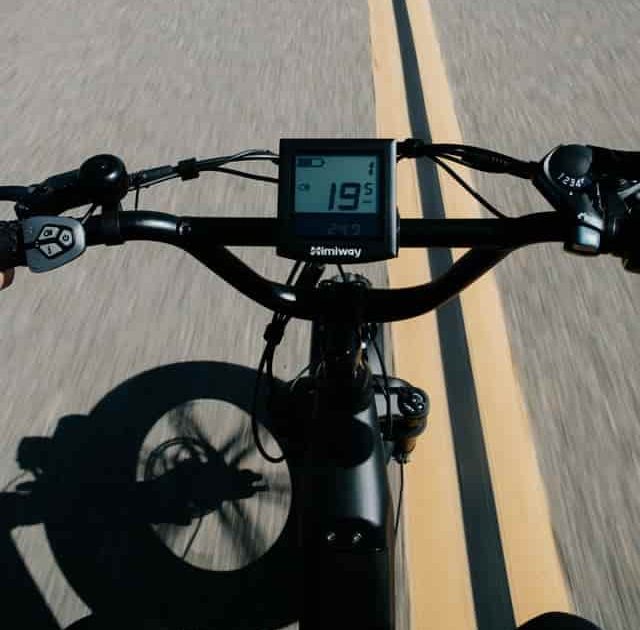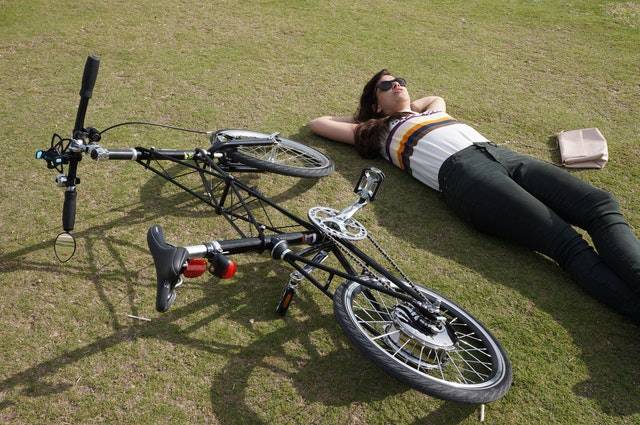Have you ever wondered how fast electric bikes can go? It’s an intriguing question, especially if you’re thinking of getting one yourself.
If the idea of a free and easy ride with no need to worry about hills or long distances has been appealing to you, then electric bikes may be the perfect solution.
In this blog post we’ll take a look at why so many people now choose them over traditional bicycles and exactly what kind of speeds they can reach.
We’ll also discuss the benefits that come alongside riding an electric bike – from zero emissions to improved physical health. Get ready for an exciting journey exploring these increasingly popular two-wheeled machines!
Quick Answer
While most electric bikes have a top speed of 15 mph on average, some electric bikes can reach shockingly faster speeds. This includes class 1 and class 2 E-bikes, which have a top speed of up to 20 mph; class 3 pedal-assist models with a top speed of 28 mph; and special 5000W electric bikes with 26-inch tires that can allegedly zoom up to 50-65 mph – although these types of models typically aren’t legal in most places.
E-Bike Classification: Maximum Speeds for Different Electric Bike
Do you know electric bikes are divided into three different classes? Today most countries including United States follows this classification of e-bikes into class 1, class 2, and class 3 respectively.
The said category is based on the bike’s wattage, speed, and operation. Let’s look into these classifications and how they came into being and adopted around the world.
Maximum Speed | Motor Power | MPH | KM/H | Pedal Assist | Throttle |
Class 1 | 250W | 20 | 32 | Yes | No |
Class 2 | 250W / 500W | 20 | 32 | Yes | Yes |
Class 3 | 500W / 750W | 28 | 45 | Yes | No |
Class 4 | 1000W | 35 | 56 | Yes | Yes |
Class 4 | 3000W | 50 | 80 | Yes | Yes |
Class 1: Paddle Assist Only Top Speed 20 mph
The electric bikes that fall under this category ( Class 1 ) have motor that works only in paddle assist mode. This means they will only function once you push the pedal.
It is one of the most common types of electric bikes found in the market. These are the most passive of all and are called peddle assist bikes or pedelec bikes based on their mode of operation.
Here the rider needs to pedal normally in order for the motor to assist up to 20 mph and motor wattage up to 750W. After that, it is up to you how fast you can go pedaling.
With pedal assistance, it takes less effort to ride this bike and you can also go faster. Further, you can easily control the level of assistance you need when cycling.
These E-bikes can be used on all tracks, roads, and pathways and do not require any license to ride.
Recommended: HITTROAD 350W Powerful Electric Bike

Class 2: Throttle Only Top Speed 20 mph
Class 2 e-bikes give riders the advantage of not only being propelled by pedaling, but also with a powerful throttle feature. They are often called slow-speed throttle assisted e-bike.
This combination grants complete control over one’s own movements and speed.
The electric bikes that fall under this category ( Class 2 ) has the maximum speed of 20 mph. Bikes with both pedal assist and throttles are classified under class 2.
Here you have two working modes; full throttle and paddle assist mode. These bikes can be easily propelled by the throttle without ever need to pedal.
Limited by their speed at 20 mph these electric bikes are more common in the US, China, and other Asian countries; because of the much stricter laws in the EU.
Recommended: NAKTO Electric Bike for Adult 18-22MPH
Class 3: Pedal Assist top speed 28 mph
Also known as speed pedelec these e-bikes are most efficient, faster and are refined versions of normal class 1 pedal-assist bikes. Class 3 e-bikes are the perfect way to experience the full potential of an electric bicycle.
With speed capabilities up to 28 mph when pedaling, these e-bikes can provide a much more exhilarating ride than a standard bicycle.
However, they come with the caveat of not being allowed on dedicated bike paths due to safety concerns.
These high powered ebikes feature motors up to 750W and will provide assistance until they reach the maximum pace of 28 mph, after which they will reduce speed.
Furthermore, if throttle is used and pedaling is stopped, then the speed will gradually lessen until it reaches20 mph. If pedaling resumes then the acceleration will begin again until the limit is reached.
Recommended: Ride1UP 700XR Series Ultimate Electric Bike
Class 4: The Fastest Electric Bike Possible.
Class 4 electric bikes are classified in the same category as electric dirt bikes, and cannot be legally used on public roads due to their maximum speed exceeding 28mph and the motor power exceeding 750W.
Depending on various factors such as your weight, terrain, and personal preference, a 1000W e-bike can peak at speeds between 35 to 40 mph, while 3000W e-bikes exceed 50 mph.
Legal regulations also vary from state to state in the US; for example, six states explicitly allow electric bikes with a maximum power of 1000W (Georgia, Kansas, Minnesota, Oklahoma, Oregon and Virginia).
On the other hand, Florida and Mississippi have no limits for e-bikes.
Therefore when considering purchasing an e-bike you should make sure that it abides by your jurisdiction’s regulations and you follow them accordingly.
Rules & Restrictions for Electric Bikes
Let’s face it your 500W / 750W electric bike can easily go up to 36 mph but the law restricts it to go beyond 28 mph. Regulations always kills the thrill and suck the fun out of any sport or activity.
But they are there for our own safety and need to be followed. Otherwise, there would have been total chaos, accidents, and breakdown of the transportation system.
The consumer product safety act in the united states restricts to use or sell electric bike above 750W or 28 mph top speed without a license and proper registration.
In Australia, pedal-assist (or “pedelec”) bikes are limited by law to have maximum speed of 25 kmph and to be EN15194-certified with maximum power of 250W electric motor.
According to Canadian law a vehicle is considered to be e-Bike if it is assisted by electric motor, does not exceeds 500W motor wattage and top speed of 32 km/h or 20mph.
Similarly for European countries that do not approve high-speed electric bikes; the maximum speed limit is 15 mph. In countries such as Denmark which allows for class 3 E-bikes; the speed limit is 45 km/hr or 28 mph.
In all of the European Union, the maximum power limit for the electric motor is 250 W. Further, if you are riding a class 3 bike you are required by law to wear a helmet irrespective of your age.

Why Are E-bikes Limited To 28 mph?
E-bikes, or electric bicycles, have quickly become a popular option for riders who want a quicker way to get around their cities and neighborhoods, that too quickly and efficient.
However, many e-bike riders may be wondering why these bikes are limited to just 28 mph. This speed limit is actually in place due to safety reasons.
Since the higher speeds make it more difficult for users to respond quickly in event of emergency, having lower speed limit makes sure that cyclists can protect themselves as much as possible while riding an e-bike.
In fact, many bike accidents have happened related to high speeding, as in this case where a women died in a deadly e-bike crash with SUV.
Similar cases has lead to California city responding by a push for strict e-bike laws after the city reported a 233-percent rise in bike-related accidents over the course of the past three years.
Additionally, these regulations keep others sharing the road safe from not only speeding cyclist, but also from any dangers resulting from faulty brakes.
Thus while the restrictions may seem inconvenient, they are necessary to ensuring everyone’s safety on our busy streets and pathways. Never bike laws are for your own safety and not some inconvenience.
Safety Considerations When Riding an Electric Bike at High Speed
Riding an e-bike at high speeds can be an exhilarating experience, but safety should always come first. Wearing a certified and tested helmet is essential for protecting the head and brain in case of an accident.
It’s also important to wear visibility gear such as high visibility cycling jacket, with proper lights and reflectors when riding in low-light areas or times of day – not only for the safety of the individual but for those nearby.
To ensure your ride does not end suddenly, it’s important to regularly check your bike’s brakes and tires to guarantee they are in good working order before heading out on your journey.
Taking time to think about these considerations will help ensure you have the most enjoyable ride possible while staying safe.
Furthermore, it is important to be mindful of the local laws and regulations on electric bikes.
Obeying traffic rules such as wearing a helmet, stopping at red lights, proper hand signaling and using designated bike lanes can help keep you safe while riding.
Additionally, being aware of the speed limits and not exceeding them is essential for avoiding costly fines or other penalties. As long as you keep these rules in mind, be assured that your rides will be enjoyable and safe.
Also Read,
How Electric Bikes Throttle And Pedal Assist Work?









Thank you for sharing